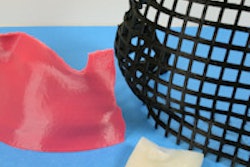Researchers at Los Alamos National Laboratory and Stanford Synchrotron Radiation Lightsource are collaborating on an investigation of the element actinium to potentially create new anticancer drugs, according to a study published online August 17 in Nature Communications.
The short half-life of actinium-225 offers opportunities for new alpha-emitting drugs to treat cancer, said Maryline Ferrier, a postdoctoral researcher at Los Alamos, in a statement from the laboratory. The challenge is that all of actinium's isotopes are radioactive with short half-lives, which makes it hard to work with large enough quantities to study its chemistry and bonding, she added.
For the actinium project, the researchers used a spectroscopic analysis called x-ray absorption fine structure (XAFS) to determine the number and type of atoms surrounding actinium, among other information. They hope to provide the chemical information needed to develop ways to bind actinium so that it can be safely transported through the body to the tumor cells.
Perhaps the most notable impact of the research would be the use of actinium-225 in targeted alpha therapy, which exploits alpha emissions from radioisotopes to destroy malignant cells while minimizing the damage to healthy surrounding tissue.



















